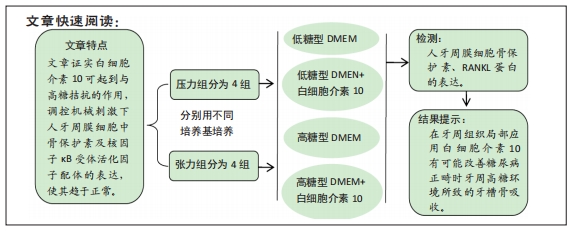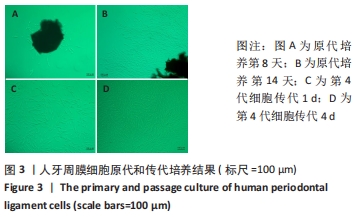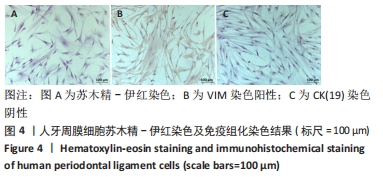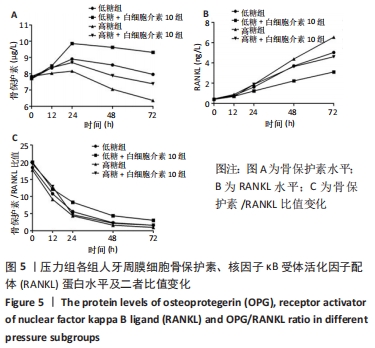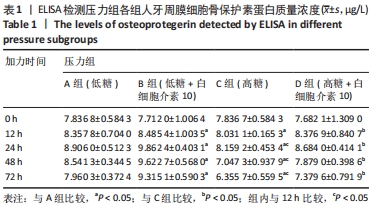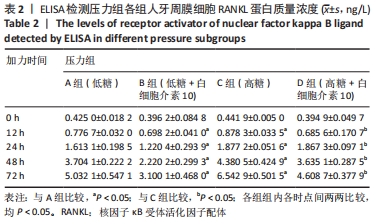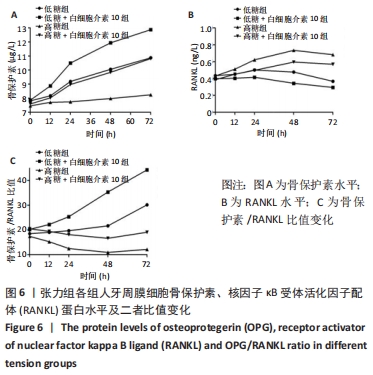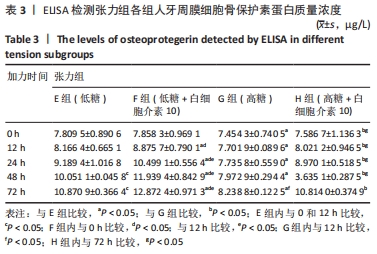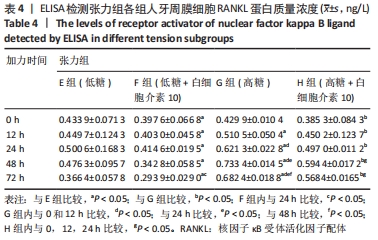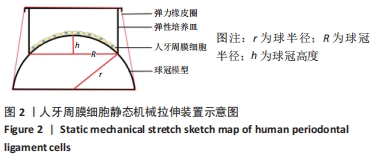[1] GRAVES DT, DING Z, YANG Y. The impact of diabetes on periodontal diseases. Periodontol 2000. 2020;82(1):214-224.
[2] PICKE AK, CAMPBELL G, NAPOLI N, et al. Update on the impact of type 2 diabetes mellitus on bone metabolism and material properties. Endocr Connect. 2019;8(3):55-70.
[3] NAJEEB S, SIDDIQUI F, QASIM SB, et al. Influence of uncontrolled diabetes mellitus on periodontal tissues during orthodontic tooth movement: a systematic review of animal studies. Prog Orthod. 2017;18(1):5-12.
[4] 迟家敏. 实用糖尿病学[M].4版.北京:人民卫生出版社, 2015.
[5] 勾忠平,李秀钧. 糖尿病属慢性炎症性疾病——慢性炎病新概念释义与讨论[J].实用糖尿病杂志,2007,3(2): 5-7.
[6] ACHARYA AB, THAKUR S, MUDDAPUR MV. Evaluation of serum interleukin-10 levels as a predictor of glycemic alteration in chronic periodontitis and type 2 diabetes mellitus.J Indian Soc Periodontol. 2015;19(4):388-392.
[7] RODIC T, WÖLFEL EM, MILOVANOVIC P, et al. Bone quality analysis of jaw bones in individuals with type 2 diabetes mellitus-post mortem anatomical and microstructural evaluation. Clin Oral Investig. 2021; 25(7):4377-4400.
[8] THEOLEYRE S, WITTRANT Y, TAT SK, et al. The molecular triad OPG/RANK /RANKL:involvement in the orchestration of pathophysiological bone remodeling. Cytokine Growth Factor Rev. 2004;5(6):457-475.
[9] TROUVIN AP, GOËB V. Receptor activator of nuclear factor-κB ligand and osteoprotegerin: maintaining the balance to prevent bone loss. Clin Interv Aging. 2010;19(5):345-354.
[10] BOBHATE A, VISWANATHAN V, ARAVINDHAN V. Anti-inflammatory cytokines IL-27, IL-10, IL-1Ra and TGF-β in subjects with increasing grades of glucose intolerence (DM-LTB-2). Cytokine. 2021;137:155333.
[11] RIOS-ARCE ND, DAGENAIS A, FEENSTRA D, et al. Loss of interleukin-10 exacerbates early Type-1 diabetes-induced bone loss. Cell Physiol. 2020;235(3):2350-2365.
[12] ZHENG J, CHEN S, ALBIERO ML, et al. Diabetes Activates Periodontal Ligament Fibroblasts via NF-κB In Vivo. Dent Res. 2018;97(5):580-588.
[13] JEON HH, TEIXEIRA H, TSAI A. Mechanistic Insight into Orthodontic Tooth Movement Based on Animal Studies: A Critical Review. J Clin Med. 2021;10(8):1733.
[14] VAN EXEL E, GUSSEKLOO J, DE CRAEN AJ, et al. Low production capacity of interleukin-10 associates with the metabolic syndrome and type 2 diabetes: the Leiden 85-Plus Study. Diabetes. 2002;51(4):1088-1092.
[15] RIOS-ARCE ND, DAGENAIS A, FEENSTRA D, et al. Loss of interleukin-10 exacerbates early Type-1 diabetes-induced bone loss. Cell Physiol. 2020;235(3):2350-2365.
[16] RIBEIRO IS, PEREIRA ÍS, SANTOS DP, et al. Association between body composition and inflammation: A central role of IL-17 and IL-10 in diabetic and hypertensive elderly women. Exp Gerontol. 2019;127: 110734.
[17] ZHANG F, YANG Y, LEI H, et al. A meta-analysis about the association between -1082G/A and -819C/T polymorphisms of IL-10 gene and risk of type 2 diabetes. Hum Immunol. 2013;74(5):618-626.
[18] TAI N, YASUDA H, XIANG Y, et al. IL-10-conditioned dendritic cells prevent autoimmune diabetes in NOD and humanized HLA-DQ8/RIP-B7.1 mice. Clin Immunol. 2011;139(3):336-349.
[19] LI Y, JACOX LA, LITTLE SH, et al. Orthodontic tooth movement: The biology and clinical implications. Kaohsiung J Med Sci. 2018;34(4):207-214.
[20] YANG CY, JEON HH, ALSHABAB A, et al. RANKL deletion in periodontal ligament and bone lining cells blocks orthodontic tooth movement. Int J Oral Sci. 2018;10(1):27-35.
[21] NAJEEB S, SIDDIQUI F, QASIM SB, et al. Influence of uncontrolled diabetes mellitus on periodontal tissues during orthodontic tooth movement: a systematic review of animal studies. Prog Orthod. 2017; 18(1):1-7.
[22] SANTAMARIA-JR M, DO NASCIMENTO ERA, BAGNE L, et al. Pulpal outcomes in orthodontic tooth movement in diabetes mellitus. Odontology. 2021;109(4):921-929.
[23] SASAKI F, HAYASHI M, ONO T, et al. The regulation of RANKL by mechanical force. J Bone Miner Metab. 2021;39(1):34-44.
[24] ZHANG L, DING Y, RAO GZ, et al. Effects of IL-10 and glucose on expression of OPG and RANKL in human periodontal ligament fibroblasts. Braz J Med Biol Res. 2016;49(4):e4324.
[25] JANJIC M, DOCHEVA D, TRICKOVIC JANJIC O, et al. In Vitro Weight-Loaded Cell Models for Understanding Mechanodependent Molecular Pathways Involved in Orthodontic Tooth Movement: A Systematic Review. Stem Cells Int. 2018;2018:1-17.
[26] KANZAKI H, CHIBA M, SHIMIZU Y, et al. Periodontal ligament cells under mechanical stress induce osteoclastogenesis by receptor activator of nuclear factor kappaB ligand up-regulation via prostaglandin E2 synthesis. Bone Miner Res. 2002;17(2):210-220.
[27] 黄生高,张建兴,熊培颖,等. 持续静压力对人人牙周膜细胞OPG及ODFmRNA表达的影响[J].临床口腔医学杂志,2006,22(6):347-350.
[28] NGAN P, SAITO S, SAITO M, et al. The interactive effects of mechanical stress and interleukin-1 beta on prostaglandin E and cyclic AMP production in human periodontal ligament fibroblasts in vitro: comparison with cloned osteoblastic cells of mouse (MC3T3-E1). Arch Oral Biol. 1990;35(9):717-725.
[29] 麻健丰,胡军,张秀华,等. 静态拉伸应变对人牙周膜成纤维细胞的影响[J].实用口腔医学杂志,2003,19(5):439-442.
[30] WEIDER M, SCHRÖDER A, DOCHEVA D, et al. A Human Periodontal Ligament Fibroblast Cell Line as a New Model to Study Periodontal Stress. Int J Mol Sci. 2020;21(21):7961.
|
